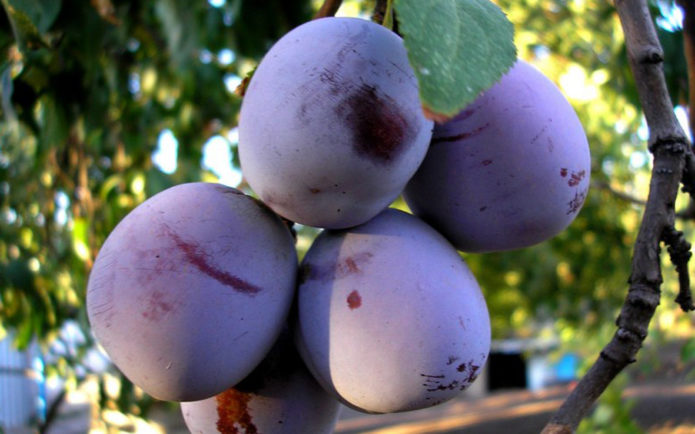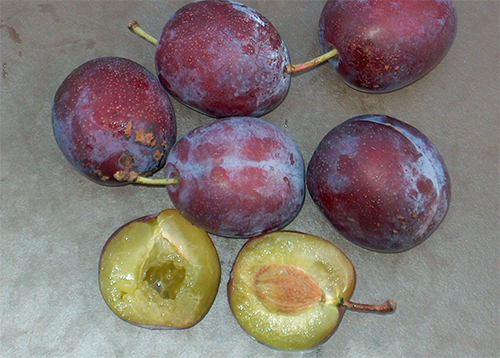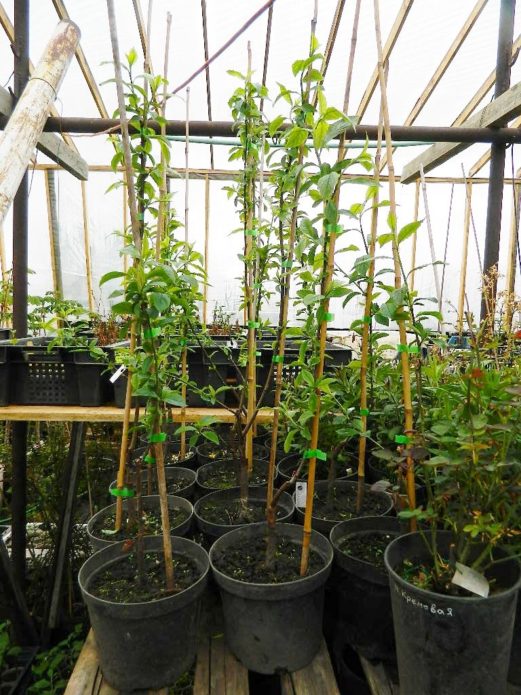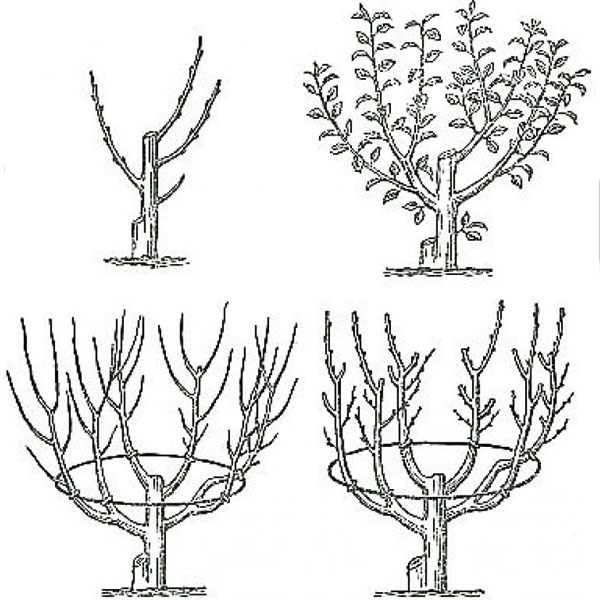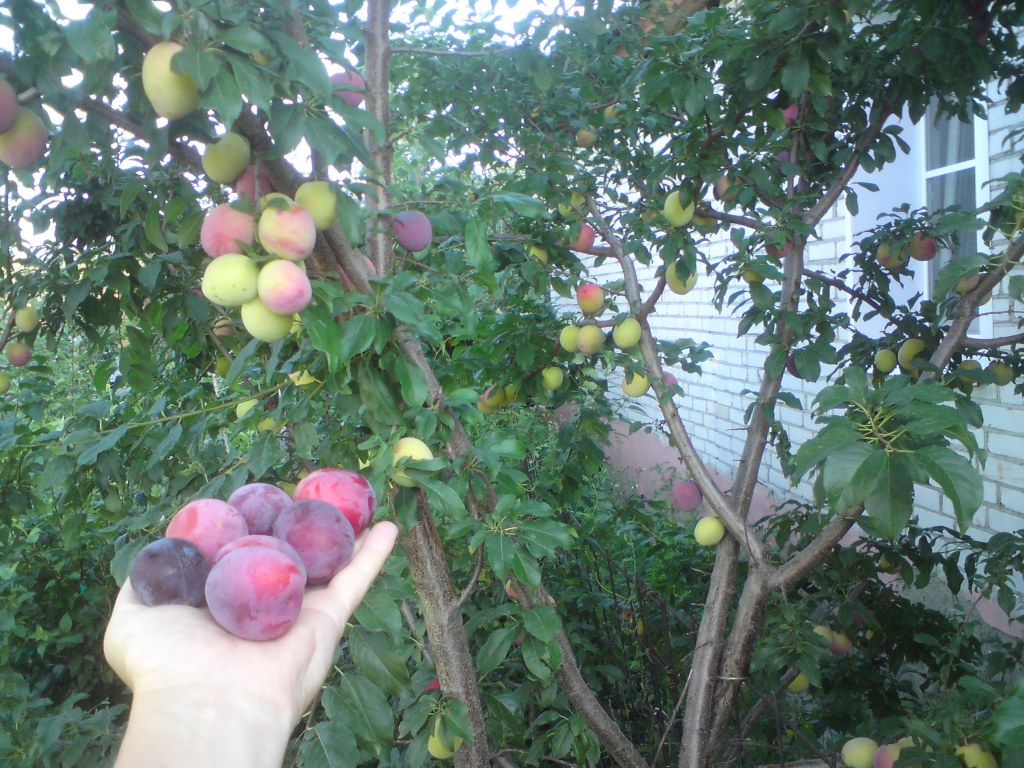Anna Shpet is an old, well-deserved plum variety, tested by more than one generation of gardeners. And he still has not lost its popularity, despite the fact that breeders are constantly developing new varieties. Anna Shpet very successfully combines general unpretentiousness in care and non-capriciousness regarding cultivation conditions with a consistently high yield, annual fruiting and excellent taste of fruits.
Content
Description of the features of plum varieties Anna Shpet
The plum variety Anna Shpet (aka Anna Späth and Anna Szpet, popularly known by the affectionate nickname "Annushka") appeared in the State Register of Russia in 1947. It was recommended to be cultivated in the North Caucasus and the south of the Volga region, but the culture was quickly appreciated by gardeners living in regions with a more severe climate. Anna Shpet was actively cultivated in Ukraine, Belarus, Moldova, Crimea and the Volga region.
In Europe, the variety has been known since the 70s of the XIX century, a detailed description was given in 1881. It was named after the author's daughter, Ludwig Shpet. Plum, oddly enough, is a "by-product" of the activities of this breeder, who specialized in the development of new varieties of lilacs. The new variety is the result of spontaneous pollination of an unknown seedling. Until now, nothing is known about the "parents" of Anna Shpet.
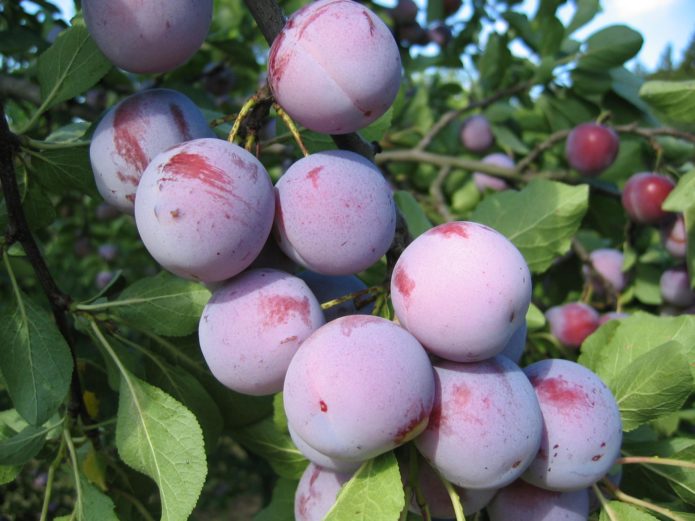
One of the many advantages of Anna Shpet plum is its high yield; the fruits literally stick around the branches
Anna Shpet is a late plum. The crop is harvested only in the last days of September. Fruiting often lasts until mid-October. It cannot be called especially frost-resistant (it can withstand cold up to -20 ° C); when grown in temperate climates, the tree requires high-quality preparation for winter. But even if it suffered from frost, the regenerative abilities of the variety are at a height. Wood and growth buds recover well. And frost resistance can be increased by grafting on varieties zoned in regions with a temperate climate. Plum blooms in mid-April, so it rarely gets under return frosts. The flowering tree looks very decorative - the snow-white flowers literally stick around the branches.
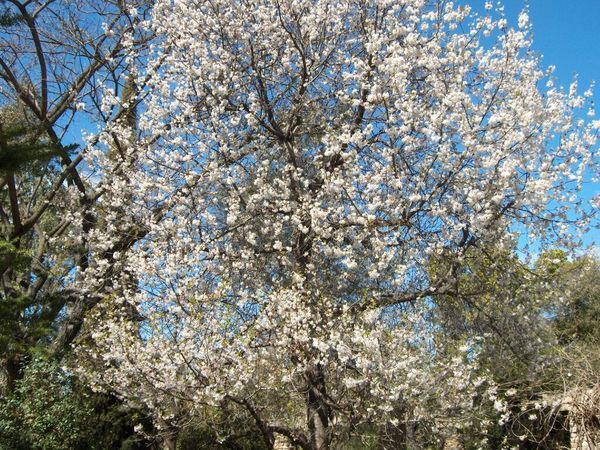
Plum Anna Shpet not only bears fruit abundantly and regularly, but also blooms very beautifully, decorating the garden in spring
This variety tolerates drought well, even long-term, unpretentious care. In particular, she feels good in the Kuban steppes. Anna Shpet has the ability to adapt to a wide range of climatic and weather conditions.
The tree does not differ in growth rate, but Anna Shpet has a rather long period of productive life - 40–45 years. During this time, it manages to stretch out 4.5–5 m in height, which significantly complicates the harvest. The crown is thickened, the shape varies from round-pyramidal to almost spherical. The shoots are thick, erect, but the wood is rather loose, Anna Shpet often breaks from the wind.
The first harvest can be expected 3-5 years after planting the seedling in a permanent place. An adult tree (five years and older) in particularly successful years brings 130–140 kg of plums. Young trees are also fruitful - up to 60–80 kg. After 20 years, this figure is gradually declining, but it is still very decent. Of course, such values are achievable only in a warm southern climate. Where it is colder, Anna Shpet does not perform so well. Fruiting is annual, without interruption.
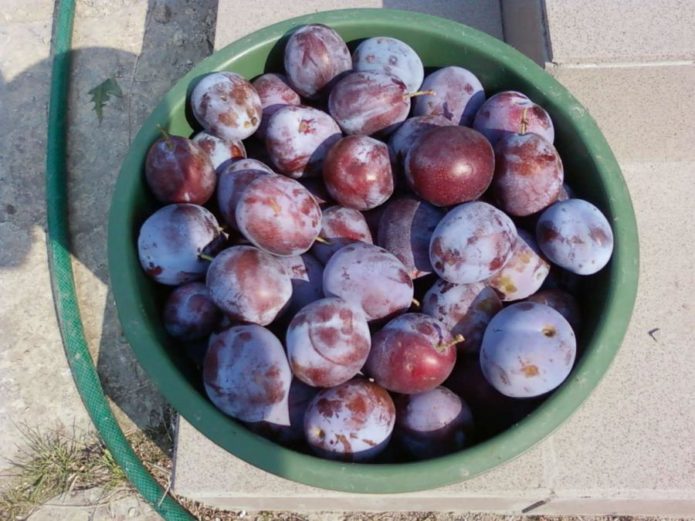
The yield at the plum Anna Shpet is excellent, in terms of fruiting this tree can be counted on annually
The variety resists moniliosis quite well, the rest of the typical diseases of the culture - at the standard level. Anna Shpet's Achilles' heel is polystygmosis. Chlorosis almost inevitably develops when grown in alkaline soil. Pests and small rodents also love it.
Plum Anna Shpet is positioned as partially self-fertile. But the presence of a number of pollinators of 2-3 different varieties significantly increases the yield. It is best to use Ekaterina, Victoria, Washington, Kirke, Italian Hungarian, Peach, Raisin-Eric in this capacity. Any varieties of Renklode make Anna Shpet's taste more intense. The optimal distance between trees is 3–3.5 m.

When planted next to Anna Shpet, a plum of the Renclode Altana variety, its taste is further improved
The variety belongs to the category of dessert. Plum fruits are very large, reaching a weight of 40-50 g. The shape is from almost regular ellipse to ovoid. The longitudinal seam is wide, but superficial, not striking. The skin is smooth, dense, while not rough, thin. It is colored in a thick blue-violet color (from a distance it seems black) and is covered with a thick layer of bluish-gray bloom, which disappears as the fruit ripens. Multiple grayish dots on the surface of the fruit and brownish or reddish undertones of the skin are normal.
The pulp is translucent, golden-greenish in color. It is very juicy and tender, with mild fiber, literally melts in the mouth. The taste is harmonious, honey-sweet with a slight pleasant sourness. The sugar and acid content is 9.9% versus 0.73%. The sweetest plums are harvested late, when the skin is already beginning to wrinkle. The stone is not large (weighing up to 1.5 g), it is easily separated from the pulp. Even fully ripe fruits are firmly held on the branches, do not crumble. However, in rainy weather, plums often crack and begin to rot. This is due to the increased juiciness of the fruit.
Plum Anna Shpet is used mainly fresh, suitable for making compotes, preserves, jams. The variety is of little use for freezing, dried fruits will not work either. After such processing, plums almost completely lose their taste and sweetness. The fruits are distinguished by good keeping quality and transportability. Under suitable conditions or in the refrigerator, the drain will last about a month.
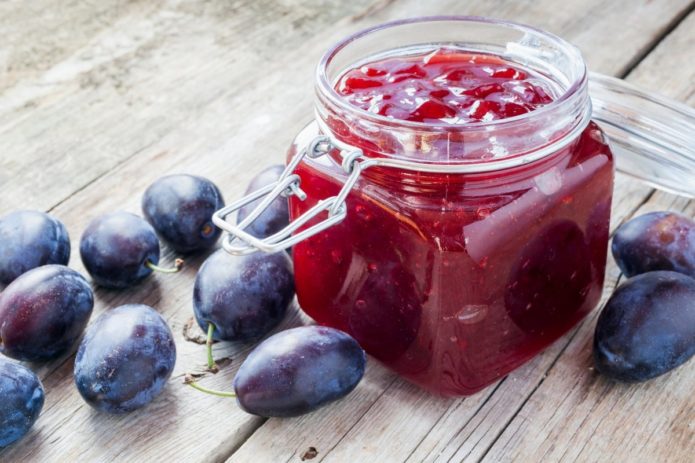
Plum Anna Shpet is suitable not only for fresh consumption, but also for home canning, but it will not work to freeze it
Video: what a plum variety Anna Shpet looks like
Important nuances regarding planting a tree and preparatory procedures
Plum Anna Shpet is thermophilic, so an open plot is selected for her, well warmed up by the sun. But at the same time, a barrier should be located nearby, protecting the tree from sudden gusts of wind and cold drafts. After all, it can easily break. The best option is to plant a tree on the south side, near a fence or at home.
Most gardeners plant this plum in the fall, in the first half of September. But nothing prevents spring planting. In regions with the most suitable climate for culture, you can not be afraid that the seedling will fall under sudden return frosts or winter will suddenly come.
Anna Shpet is unpretentious to the quality of the soil. She has only three requirements - the soil must be loose and with a neutral acid-base balance. The "poverty" of the substrate can be easily leveled by regular application of suitable fertilizers, the "heaviness" - by coarse river sand. Dolomite flour, slaked lime, ground eggshell cope with excessive acidity. The last prerequisite is groundwater located deep below the soil surface. If they come closer than two meters to it, give up the idea of placing the sink in this place. In the absence of an alternative, you will have to fill a hill of at least 70 cm in height.
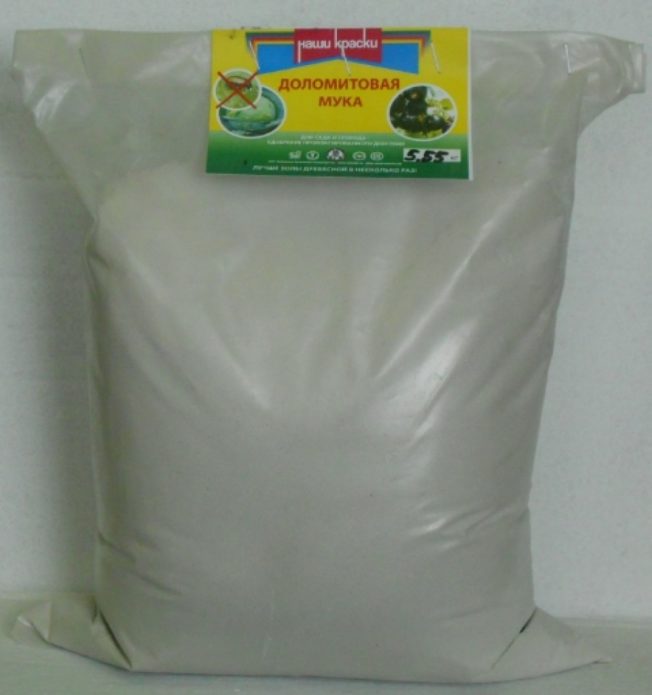
Dolomite flour is a natural soil deoxidizer; if you do not exceed the recommended dosage, it is absolutely safe for people and plants
High-quality planting material is the key to a bountiful harvest in the future. Therefore, purchase seedlings only from trusted suppliers. Two-year-old plums, bought in the same area where the garden plot is located, take root best.
The plant has a well-developed root system, so the planting hole is dug to a depth of 65–70 cm. From this moment, at least three weeks should pass before Anna Shpet is planted in the ground. A drainage layer is required at the bottom so that water does not stagnate at the roots. Fertilizers are introduced into the pit - 10 kg of humus or rotted manure, 100 g of potassium sulfate and 140 g of simple superphosphate. Plum also reacts well to natural fertilizers. Wood ash is a natural source of potassium and phosphorus (approximately 3 liters is sufficient). Be sure to stick a peg into the bottom of the pit to tie the seedling. If you do this after the plum has already been planted, you can injure the roots.
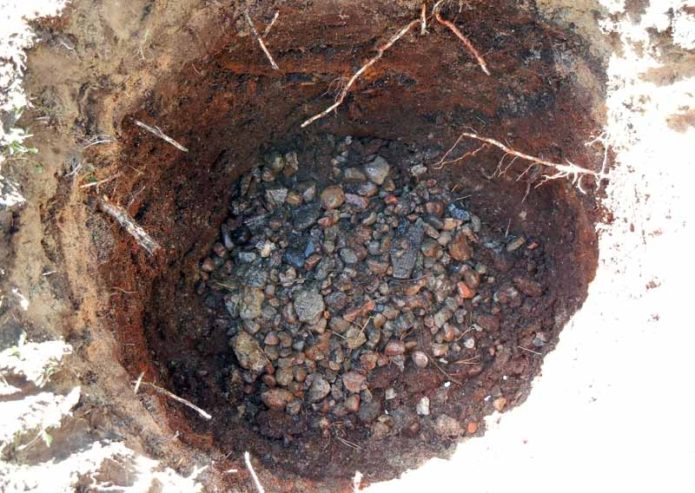
Drainage at the bottom of the planting pit for Anna Shpet plums is required - it can be expanded clay, brick chips, small clay shards, crushed stone, and so on.
They begin to prepare the tree for planting about a day before the procedure. The roots are soaked for 6–8 hours in a solution of any biostimulant, adding several crystals of potassium permanganate for disinfection. Then they are coated with a mixture of fresh cow dung and powdered clay. The mass should dry out, it takes 4–5 hours if the plant is left in the sun.
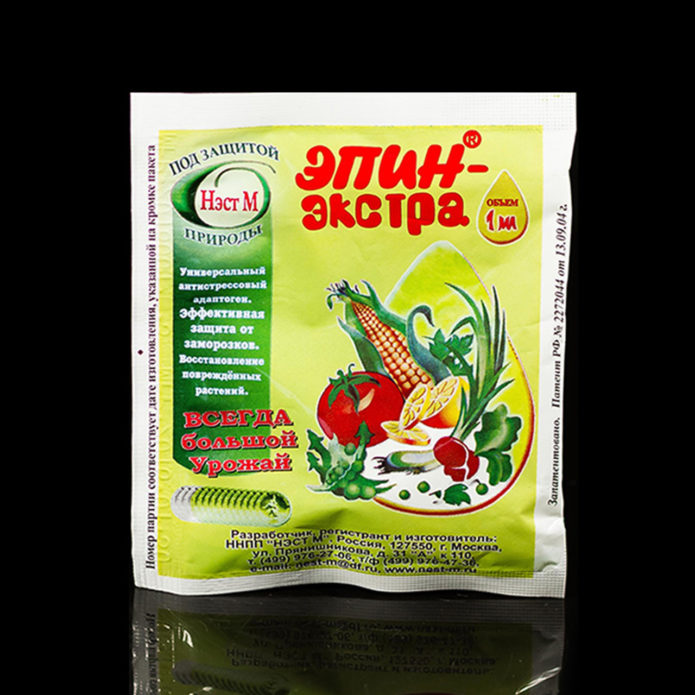
Epin is one of the most popular biostimulants; such preparations improve the plant's immunity and facilitate its adaptation to the new environment after transplanting to a permanent place
Anna Shpet is planted, forming a small mound at the bottom of the planting pit. The main thing is not to deepen the root collar in the process. When the hole is completely filled up, it should be 5–7 cm above ground level. The seedling is watered, consuming 25-30 liters of water, the soil is mulched.
A warm, sunny, calm day is chosen for planting. When laying a whole garden, about 2–2.5 m are left between neighboring trees, row spacing is 3 m.
Video: the procedure for planting a plum sapling in the ground
Recommendations for agricultural technology
Anna Shpet is deservedly considered one of the most unpretentious plums to care for. But if you want to harvest regularly, you still have to devote a minimum of time and effort to it. Nothing supernatural is required from the gardener. It is necessary to keep the tree circle clean, water the tree and apply fertilizer on time, regularly prune and properly prepare it for winter.
Anna Shpet tolerates drought well. During the season, three abundant watering is enough for the tree - at the moment of the beginning of active growing season, when the fruits begin to form and 2-3 weeks after harvest. The soil should be soaked to a depth of 25–30 cm. The last watering (the so-called water-charging) is especially important. Without it, the tree will not be able to properly prepare for winter. The normal rate for an adult tree (45–50 l) increases by one and a half to two times.
This plum will be grateful to the gardener for any fertilizing, organic or mineral. It is best to alternate them.As soon as the soil thaws enough, humus or rotted compost is added to the trunk circle to maintain soil fertility. After a couple of weeks, Anna Shpet is watered with a solution of any nitrogen-containing fertilizer.

Humus is introduced into the near-trunk circle of Anna Shpet annually, if the substrate is not particularly fertile
Further, the plant needs only phosphorus and potassium. Appropriate dressing is applied at the time of the formation of fruit ovaries and at the end of the harvest. If the plum is clearly lagging behind in growth and development, the yield decreases, spray it 2-3 times during the growing season with a solution of any complex mineral fertilizer for fruit trees or potassium humate (all large-fruited varieties especially need this macronutrient).
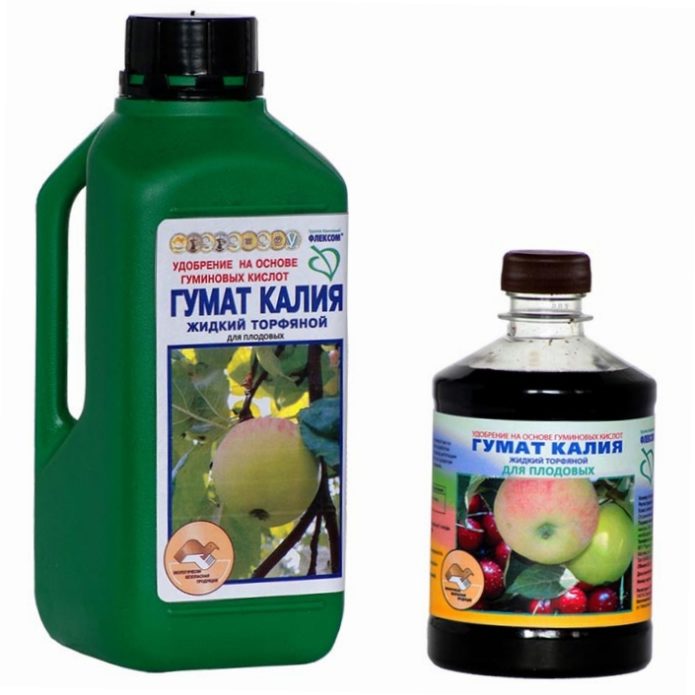
Potassium is a macroelement necessary for the normal ripening of fruits, respectively, large-fruited trees need it in increased doses.
Video: important nuances of plum care
As for pruning, the most natural option for Anna Shpet and the least time-consuming option for a gardener is a sparse-tiered crown. A bowl without a clearly pronounced central conductor is also a good fit, allowing you to slightly lower the height of the tree and provide uniform illumination of the fruit. This variety of plum is prone to thickening of the crown and abundant formation of root growth. Both must be dealt with during the growing season. Although root shoots are not always a negative. There will definitely not be any problems with the reproduction of this variety. Don't get too carried away with pruning. You can remove no more than a quarter of the green mass at a time.
At the first flowering, no matter how much you want to try the harvest as soon as possible, cut off 70-80% of the formed buds. A young tree by Anna Shpet is not able to “feed” a large number of fruits.
Video: the formation of a cupped crown in a fruit tree
To prevent the development of fungal diseases, prevention is necessary. Before and after the end of the active growing season, as well as immediately before flowering, Anna Shpet and the soil in the near-stem circle are sprayed with a solution of any fungicide. It is advisable to choose drugs of biological origin. They are as effective as chemicals, but they do not harm human health, animals and the environment.
The most dangerous disease for culture is polystygmosis. It develops almost inevitably in June, if it rains at the end of spring. Greenish-yellow spots appear on the leaves, gradually changing color to orange and light red and turning into "pads". As a result, the foliage from Anna Shpet falls off in the middle of summer. If you do not take measures, the tree practically stops growing, the shoots become thinner, and so the low cold resistance is further reduced. To prevent the plum and the soil under it, at the very beginning of April, they are sprayed with a 2% solution of Nitrafen. The same treatment is repeated one month after harvest. A faded tree is sprayed with 1% Bordeaux liquid.
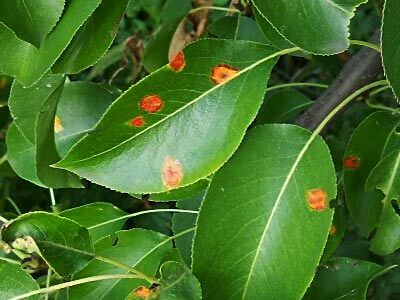
Polystygmosis itself will not kill the plum tree, but will weaken it so much that the winter cold will do it for it
In preparation for winter, first of all, you need to clean the near-trunk circle and renew the mulch layer by adding a mound of humus or peat chips 25-30 cm high at the base of the trunk. The trunk is whitewashed before the first fork and the lowest branches. This will protect them from rodents who like to feast on the fragrant wood of Anna Shpet in winter. Additionally, the trunk can be wrapped with roofing felt or nylon tights, laying spruce branches between them. If dimensions permit, cover young trees entirely with cardboard boxes, having previously tied the branches. It is strictly forbidden to use any synthetic materials for shelter for the winter. The low frost resistance of Anna Shpet, coupled with the preheating of the root collar, means the almost inevitable death of the tree.
Video: preparing plums for winter
Gardeners reviews
Anna Shpet has been growing and bearing fruit for ten years now, we are very pleased with her! There are practically some advantages - fruitful, tasty, the bone lags behind, resistant to diseases and pests, hangs on a tree for a long time and becomes even sweeter. This year the branches bent under the harvest, they had to prop up! Winter- and frost-resistant, never froze even. If I will remove other old varieties, then Anna Shpet - never !!!
I have an average weight of Anna Shpet's fruit is 50-60 g. Among the advantages I will attribute tolerable resistance to cracking in the rainy season. True, for this it is advisable to water the tree during the ripening period. I agree with the fact that it cannot really overripe, because it becomes even sweeter, especially in October, when the skin becomes a little withered. In addition to the excellent fresh taste, I would like to note the excellent taste of dried plums. More precisely, dried. I cut it into halves and dry it well in an electric dryer. Dried plums put in jars are perfectly stored. I treat moniliosis and pests on a par with other stone fruits. I did not notice any negative consequences (8 years), although, of course, there is moniliosis in the garden.
I consider Anna Shpet the most delicious plum variety in general. If you have two varieties on the site - Anna Shpet and Renklod Altana, then nothing else is needed for happiness. In addition to poor resistance to diseases, the variety also has disadvantages that it is advisable to know about in advance: a high pyramidal crown (when the tree grows, the entire crop will be outside the zone of reasonable reach and there is no way without a good ladder); weak, loose wood (a few years ago my Anna Shpet was blown to one side by a strong wind, unfortunately, having torn off part of the roots, so if you periodically have hurricanes, then consider it as a consumable); the fruits are completely unsuitable for freezing (after defrosting, the taste deteriorates sharply, the pulp turns into a gelatinous mass - in this sense, Anna Shpet is not even a competitor to some rootless cherry plum or turnip). There is no point in talking about partial sterility, because it is better not to plant a plum without a pollinator at all. By the way, Renklode Altana is generally sterile, but paired with Anna Shpet, they are good pollinators for each other.
I myself have now: Renklode Altana, Gigantic, Anna Shpet. The trees are 5-6 years old. Anna Shpet can only applaud: she will give birth for the third year, all sprinkled with fruits, all well done. Plums are delicious. But later. Renklode Altana and Gigantic upset. They bloom perfectly, the cream is tied, but quickly falls off. Not all, but the harvest is the most modest in comparison with Anna Shpet.
For example, I have Anna Shpet who dumps the entire crop for a year in a row. Not a single plum ripens.
I have three varieties of plums - Medovka, Anna Shpet and Renklod Altana. Each is good in its own way. But the biggest treat of all is Altana.
Anna Shpet is a plum very suitable for beginner gardeners. She will endure any "bullying" of herself, and in a suitable climate will also give a good harvest. The advantages of the variety seem fantastic, but they have been confirmed by several generations of gardeners, the disadvantages are also well known. Therefore, it is clear in advance what needs to be paid special attention to when cultivating. The variety cannot be called universal due to insufficient winter hardiness, but in general it successfully adapts to not quite optimal cultivation conditions, undemanding to the quality of the soil.
